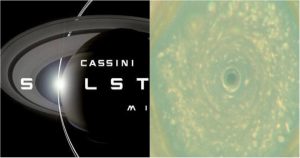
Cassini’s Mission Now Reaches New Milestone As ‘Solstice’ Arrives At Saturn
Coming to the factors of progress in Science and Technology, there are many subjects to peek into space. The recent studies from the NASA on studying the grids and patterns of the solar system is at its final stage. NASA’s Cassini spacecraft reaches a new milestone on Thursday as Saturn’s solstice starts today on the planet and its moons further.
Meanwhile, Saturn’s solstice is the longest day of summer in the northern hemisphere and the shortest day of winter in the southern hemisphere respectively.
Reports from NASA claim that reaching the solstice, and observing seasonal changes in the Saturn system along the way, was a primary goal of Cassini’s Solstice Mission – the name of Cassini’s second extended mission.
Related Articles: NASA Releases Pictures Of Saturn Casting Its Own Shadow On Its Rings
Scientists say that this Saturnian solstice occurs about every 15 Earth years as the planet and its entourage slowly orbit the sun, with the north and south hemispheres alternating their roles as the summer and winter poles.
Back in 2004, Cassini has arrived at Saturn for its four-year primary mission to study Saturn and its rings and moons. However, NASA granted Satun probe an additional seven-year tour, the Solstice Mission, which began in 2010.
“During Cassini’s Solstice Mission, we have witnessed – up close for the first time – an entire season at Saturn,” said Linda Spilker, Cassini project scientist at NASA’s Jet Propulsion Laboratory, Pasadena, California.
“The Saturn system undergoes dramatic transitions from winter to summer, and thanks to Cassini, we had a ringside seat” she added.
On the other side, the data from the mission showed how the formation of Saturn’s hazes is related to the seasonally changing temperatures and chemical composition of Saturn’s upper atmosphere. Cassini is currently in the final phase of its long mission, called its Grand Finale. Starting April 26, the spacecraft is making a series of dramatic dives between Saturn and its icy rings.
On the whole, the spacecraft will end its mission with a final plunge into Saturn’s atmosphere on September 15th of this year.